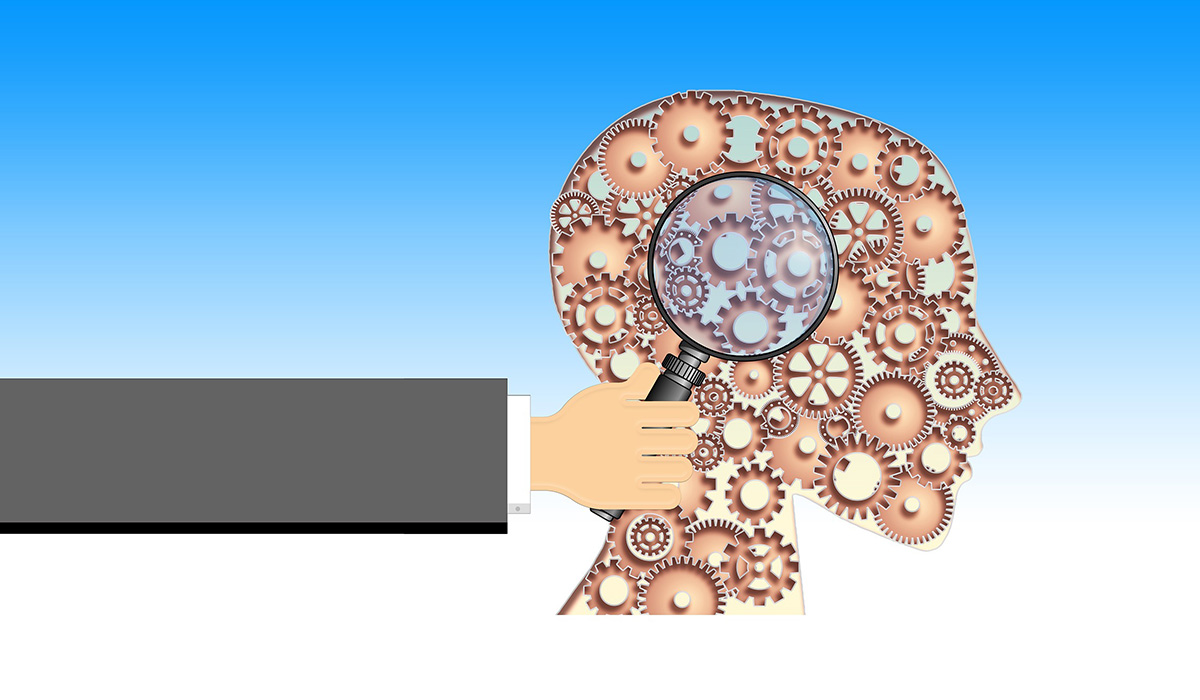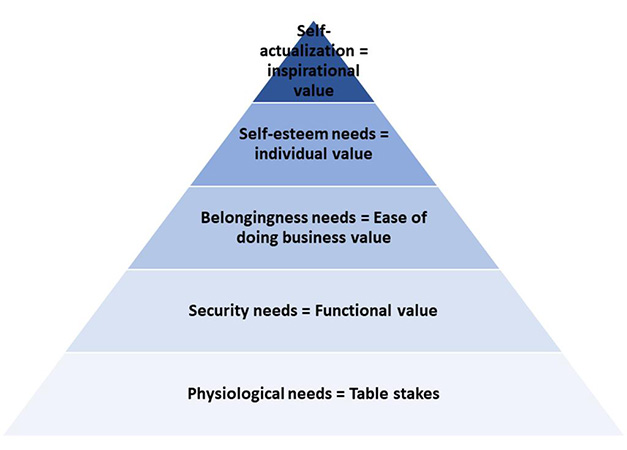
What do buyers really value?
Understanding the drivers beyond price and service will help companies avoid the commodity trap. As product offerings in food and agriculture become more standardized, recognising intangible values that influence purchasing decisions is becoming increasingly more important.
A recent article from Business Harvard Review “The B2B elements of value” featured in March-April 2018 issue (pp 72-81) * has identified 40 “elements of value”, a range of both rational and emotional factors behind business purchases. These elements of value are grouped in 5 categories: table stakes, functional, ease of doing business, individual and inspirational.
Inspired by Maslow’s hierarchy of needs, the model assumes that human actions are driven by the desire to fulfil needs from very basic (physiological and safety) to more complex ones (sense of belonging, self-esteem and self-actualization). The pyramid below illustrates the comparison between the two models.

How can companies add value and differentiate themselves when fulfilling each level of needs? A few examples and ideas are provided below:
- At the base of the pyramid are the table stakes, the absolute basic requirements for an offer to be considered. These include: meeting specifications (product and service) at an acceptable price as well as conforming with regulatory and ethical standards. Easy to measure and compare, they provide no differentiation.
- The next level captures the functional value which addresses the companies’ economic and performance needs. How can your company demonstrate functional value?
- Track record of outstanding performance above minimum requirement
- Guarantee consistent quality
- Ability to bring innovation ahead of competition, being first to market and offering uniqueness and exclusivity
- Clear plans for future cost savings
Most companies are competing in this arena, with efficiency and innovation on top of the agenda.
- The third level covers the ease of doing business.
These include objective values such as:
- Improving productivity: for example, this can be achieved by offering a system that provides real time information saving time and reducing efforts for buyer as well as improving transparency in the supply chain. Blockchain promises to fulfil this need, now assuming that is correct, who will provide the best solution and who will be first?
- Improving operation: a robust process that integrates and connects all parties will clearly have a value tag attached to it. Many companies succeed in defining and implementing a cross-functional process but fail to maintain it over time. The key is to continue to reinforce staff behaviour until it becomes second nature.
- Being a strategic fit for the organization: strong contingencies and flexibility are resources most buyers will value highly, providing them reassurance with risk mitigation plans and offering alternative solutions.
And it is at this level that we also meet elements that involve subjective judgments from buyers such as actions that enhance relationship between the parties:
- Level of responsiveness: simple actions such as ensuring there is a good coverage during seasonal holidays will improve perception of being available.
- Cultural fit: appoint account managers that share similar values, beliefs and behaviours to those found in the customer.
- Commitment to the customer organization: this is a very emotional and intangible subject, however buyers can “sense” the level of commitment from their suppliers. A topic difficult to quantify and demonstrate, however if reciprocated, it can transform into customer loyalty.
- The elements at the fourth level include further types of intangible and subjective values that address individual buyer’s priorities. These can be:
- Personal: Although buyer’s personal preferences for specific designs and taste cannot be influenced, there are areas where suppliers can adjust to match buyer’s likes. Carefully listen and observe buyer’s preference for ways of working, means of communication, speed of action, presentations or meetings and adjust to make their lives easier and more enjoyable.
- Career: Do you know the buyer’s careers prospect and aspiration? Can your company help the buyer get recognition and promotion, improve their network and marketability?
The elements of value at this level also addresses the most highly emotional concerns. Fear of failure can affect the buyer’s decision specially if such decision involves large sums of money or significant changes in the existing model. Offering risk mitigation plans and reputational assurance will aid with the decision making.
- The last level addresses the most intangible of all values, the inspirational ones. These are the elements that will help customer improve:
- Vision of the future: provide tools and insight for the customer to anticipate changes in the market.
- Hope for the future: this goes beyond the customer company’s future but also addresses the hope for the future of individual buyers. What can your company offer to help buyers grow and develop?
- Social responsibility: provide actions and stories that enhance the company’s social responsibility. Individual buyers will weight the social impact of their decisions differently, depending on their own set of personal values.
These more intangible values are becoming progressively more important as millennials enter the buying market. Millennials have a different set of values and beliefs than previous generation. In general, millennials are characterised by: being technologically savvy, more socially engaged wanting to contribute to society and the environment, they are more connected and part of larger social communities, they are eager to voice their opinions, they value personal development over financial benefit, they expect to change jobs more frequently than previous counterparts and they have a higher sense of work/life balance. Companies should adapt their value proposition to meet the needs of this new generation of buyers.
What is the right mix of objective and subjective values?
Elements of value at the bottom of the pyramid are easy to identify, measure and benchmark but provide little room for differentiation. The battle for differentiation rests in the middle and upper levels of the pyramid, creating value through the emotional elements. Each company, customer and stakeholder will be different, and it is the managers role to identify the combination that best offers a unique value proposition. A way to start:
- Ask your customers how your company is performing outside the “table stake” performance indicators.
- Listen and understand the stakeholders needs, wants and values.
- Compare your tangible and intangible values against your competition.
- Brainstorm ideas for value creation involving people from various disciplines for maximum creativity.
- Try and test different combinations of values, get feedback and asses results
It is believed that decisions are made with emotions and then the logical brain is used to validate such decisions. Finding the right mix of objective and subjective values will make your company stand out from the competitive crowd.
By Luciana VeccoKeep in Touch
Read more about what we do and how we can help your business achieve its full potential
Drop us a line